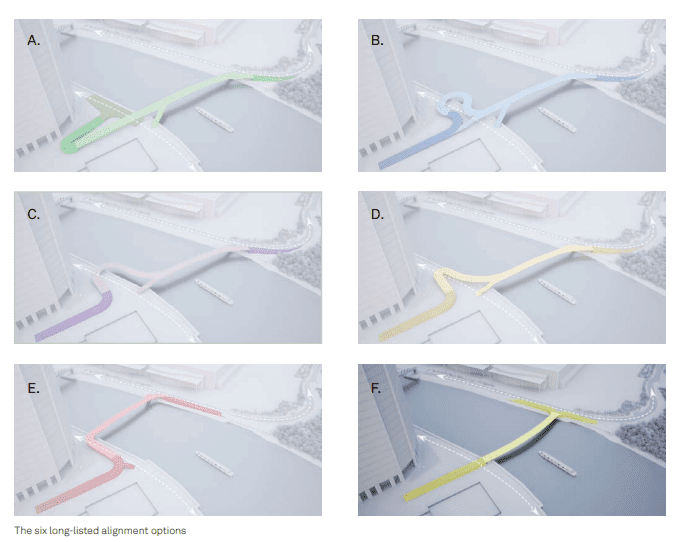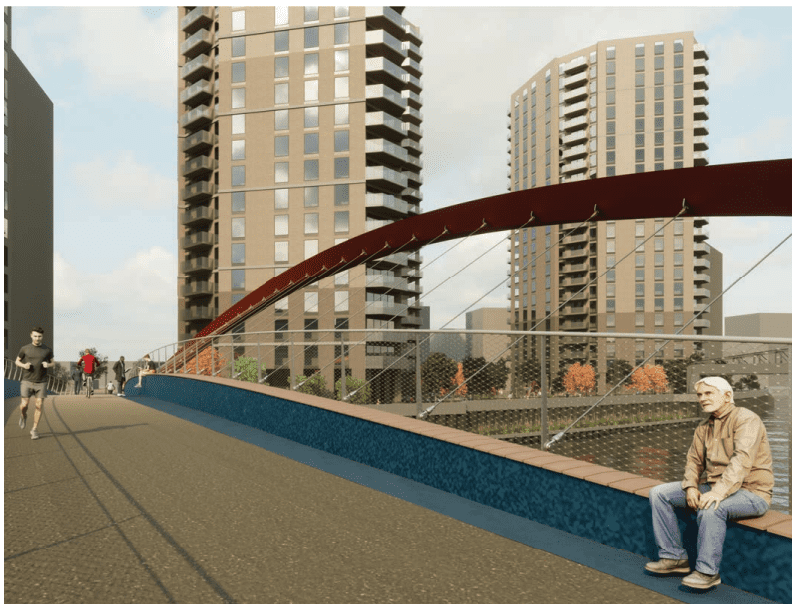Plans were lodged with Tower Hamlets council for a new, pedestrian and cycle bridge across the River Lea.
Proposals were produced by multi-disciplinary engineering consultancy Pell Frischmann on behalf of client the London Borough of Tower Hamlets.
The Lochnagar Bridge has a full funding package in place, the majority of which comes from external
public funding sources, including from the GLA and the Levelling Up Fund.
If approved it would connect up the Leaway Path near Cody Dock to the Alisa and Islay Wharf as well as the former Poplar Gasworks yielding over 4,000 new homes.
The designed bridge is a steel bowstring arch with a span of 63 metres. The arch 6.2m-high above the slightly curved deck and located on its north side, is inclined 54 degrees above the horizontal towards the north.

It would provide a permanent 33-metre-wide and 3-metre-high navigable channel for smaller boats to pass underneath.
The proposed bridge would lift on the Tower Hamlets side while keeping the Newham one fixed, causing a rotation approximately along the axis of the river.
The west end of the bridge can be raised, using hydraulic not to be more of an impediment for navigation of larger vessels.
The Public Transport Access Level (PTAL) output for the site is 1b, indicating very poor public transport accessibility, if built would reduce journey times significantly to Canning Town transport interchange.

The construction of the proposed development is likely to begin in Q2 2024, with the bridge open for public use in Q3 2025. The total construction programme is likely to be 12-14 months.
Construction of the substructure and the earthworks on the east side of the river will likely necessitate
the local closure and diversion of the Leaway Path (PRoW) for 8-10 weeks during the construction programme
and intermittently thereafter for up to 1 week on a two monthly basis.
The scheme’s main benefit will be to help reduce journey times for local residents to and from key transport interchanges at Canning Town and Bromley By Bow by bringing down journey times from 20 minutes to 10 minutes.
If approved the build-out for the proposed scheme is scheduled to take between 12 and 14 months, with the start date pending on when the scheme is granted planning permission from the client who is also the relevant planning authority.


